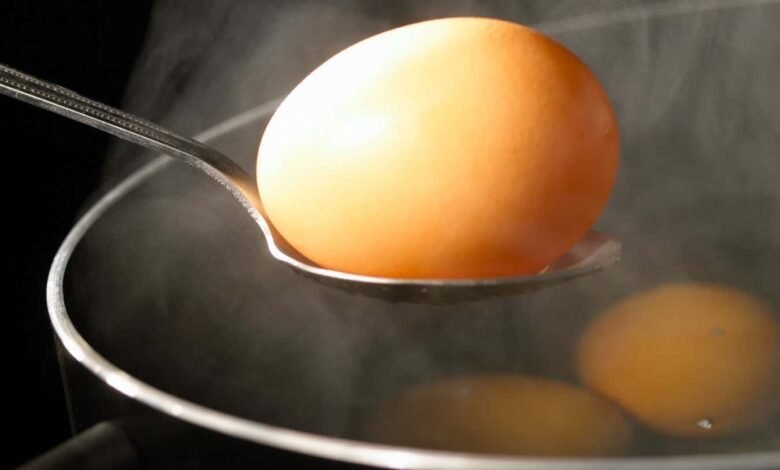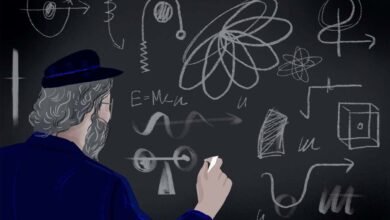The perfect boiled egg takes more than half an hour to cook


How do you cook your eggs?
The Daniel Heighton Food Collection/Alamy
Cooking a perfect boiled egg takes at least half an hour, physicists have claimed, as they say the best method for a tasty and nutritious breakfast involves switching repeatedly between pans of different temperatures.
As anyone who has ever struggled to get an egg to their liking will know, an even boil is difficult because the yolk and white cook at different temperatures. Cooking at a vigorous boil works for the white, which requires temperatures of 85°C (185°F) for optimum consistency, but can also result in a hard yolk, which only needs 65°C (149°F). Chefs have found immersing the egg in a water bath at a steady temperature of between 60°C and 70°C (140°F and 158°F) can lead to better cooked yolks, but this sous vide method also risks an undercooked white.
Now, Ernesto Di Maio at the University of Naples, Italy, and his colleagues have found a better way to evenly boil an egg, by swapping it between boiling water and 30°C (86°F) water every two minutes for eight cycles, taking a total of 32 minutes.
“Many people have tasted [the egg cooked in this way], and they were amazed by the taste and the texture,” says Di Maio. “Yes, it takes more time than usual cooking, but I think if you love someone, you should invest your time to do something properly. This is how to properly do an egg.”
To develop this method, Maio and his team first created a model of how an egg cooks by calculating the way energy spreads from the shell to the centre over time, using two equations to describe this process. By solving these equations, they found that the best way to evenly cook it would be to alternate between two different temperatures, which allows the two parts to cook separately.

The many ways to cook an egg
Pellegrino Musto and Ernesto Di Maio
After cooking eggs in this way, the team studied them using spectrometry and an MRI-like scanner. The researchers found that proteins in the egg yolk were less denatured and in the white they were more denatured, in each case meaning that part was better cooked, than in soft-boiled or sous vide eggs. They then asked people to try the eggs cooked with their method, and found that the egg white was slightly sweeter and the yolk was less sweet than in eggs cooked in other ways. They also found the white’s texture was similar to a soft-boiled egg, while the yolk was more like a sous vide egg.
The periodic egg also contained a higher amount of nutrients, such as antioxidants called polyphenols, compared with soft-boiled or sous vide eggs, though Di Maio and his team don’t know why.
“It’s fun and it’s good for a laugh,” says Peter Barham at the University of Bristol, UK. “Spending 30 minutes taking an egg in and out two different temperatures of water just to get it to cook slightly better than you would by others means where you can leave it alone is, shall we say, not very practical.”
Cooking food using alternately hot and cold environments isn’t a new idea, says Hervé This at AgroParisTech in France. “It is not original, as it was proposed about one century ago for meat.” It is also important to compare the eggs cooked in this way to eggs cooked sous vide at different temperatures, as this can dramatically change the cooked egg, he says.
Article amended on 6 February 2025
We have corrected the name of the journal
Topics:
Source link




